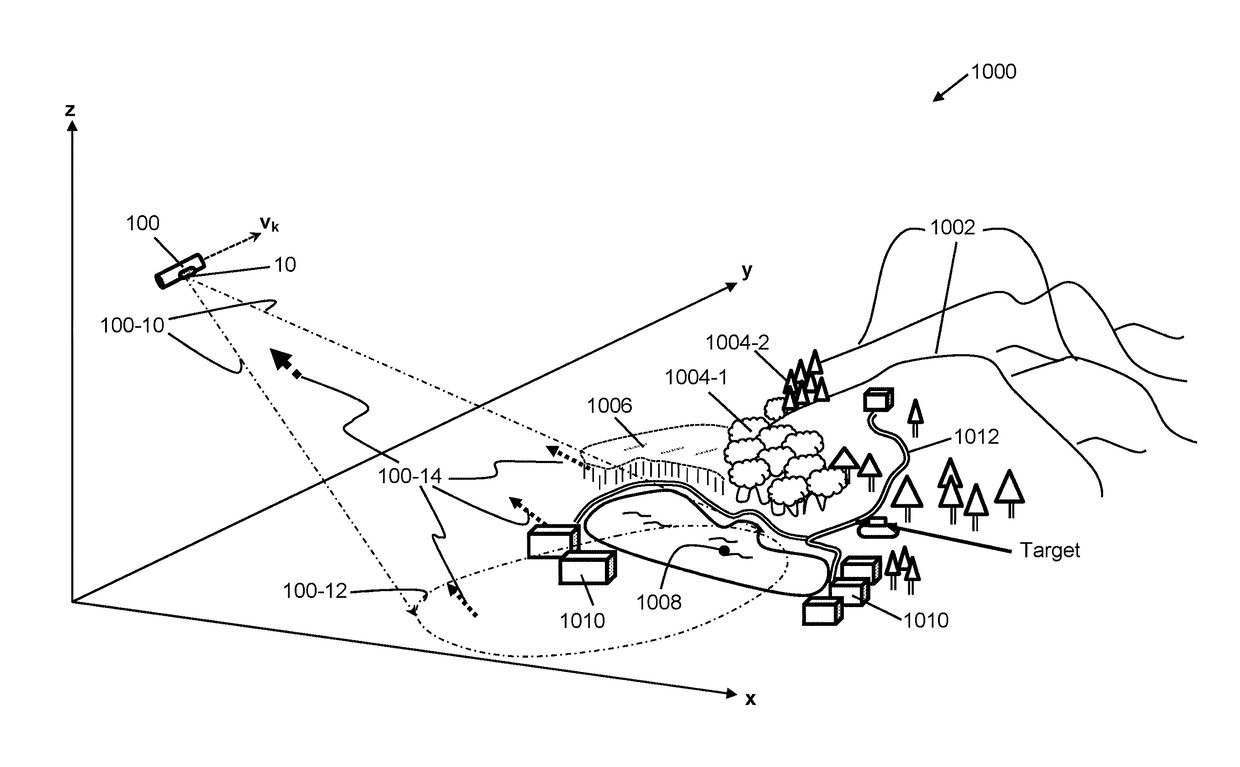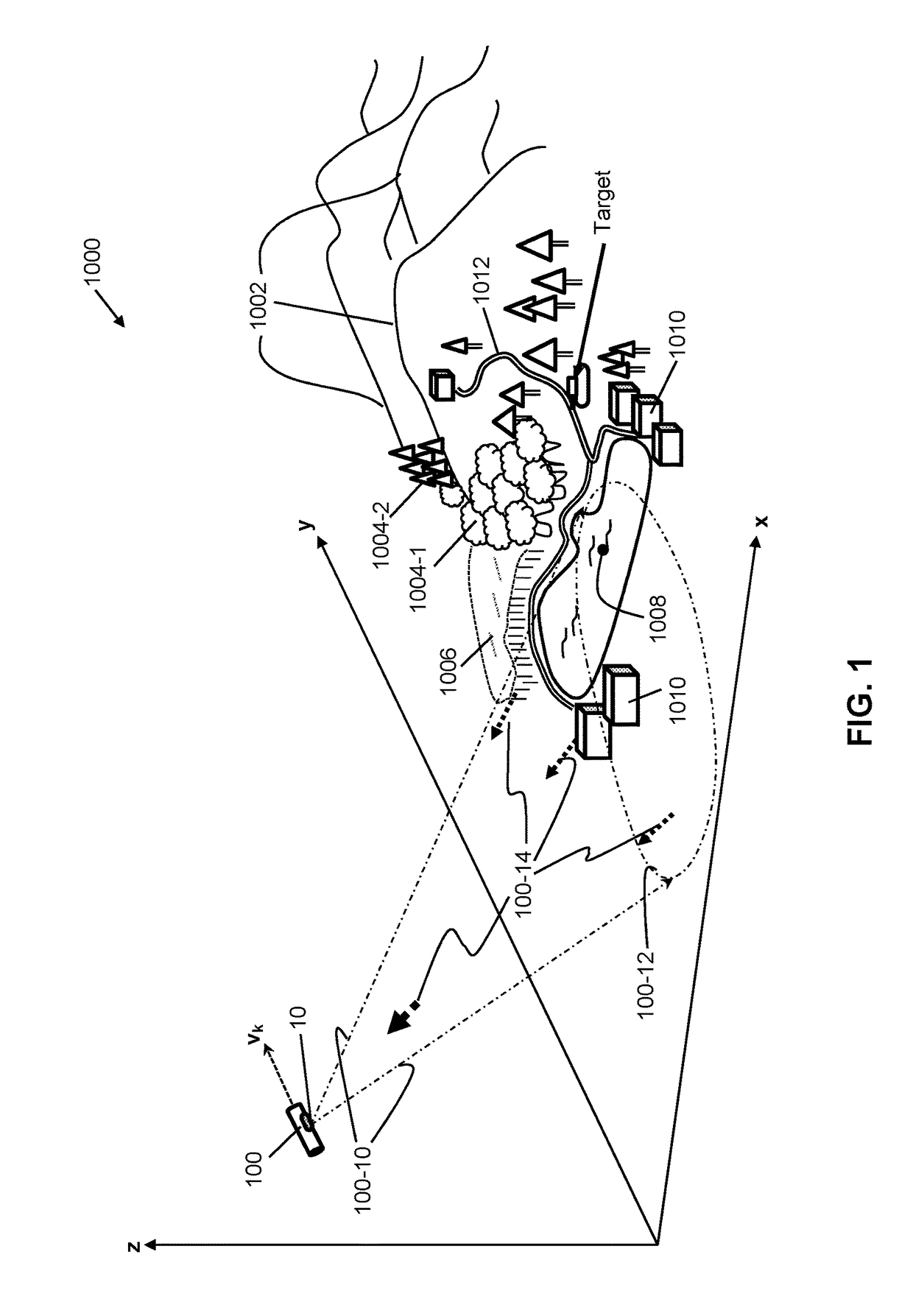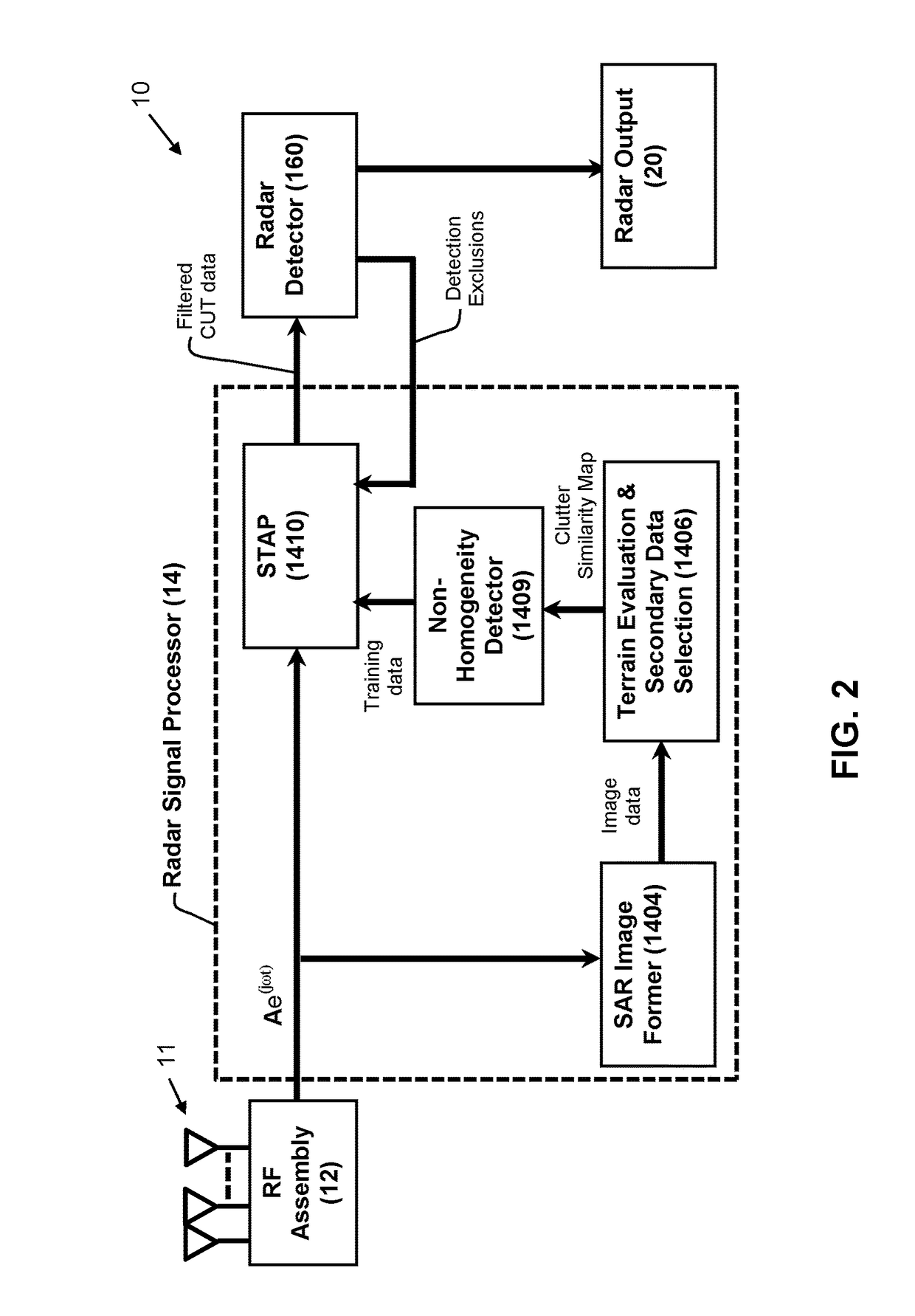Radar System
a radar system and signal processing technology, applied in the field of radar signal processing, can solve the problems of target detection problem boiling down, detection problem further compounded, and difficult radar signal processing in practice, and achieve the effect of eliminating clutter signal components
- Summary
- Abstract
- Description
- Claims
- Application Information
AI Technical Summary
Benefits of technology
Problems solved by technology
Method used
Image
Examples
Embodiment Construction
[0069]Reference will now be made in detail to the present exemplary embodiments of the invention, examples of which are illustrated in the accompanying drawings. Wherever possible, the same reference numbers will be used throughout the drawings to refer to the same or like parts. An exemplary embodiment of the radar system of the present invention is shown in FIG. 2, and is designated generally throughout by reference numeral 10.
[0070]As embodied herein, and depicted in FIG. 2, a high level block diagram of the system 10 in accordance with an embodiment of the present invention is disclosed. The system 10 includes an antenna array 11 coupled to an RF assembly 12. In any space-time adaptive processing radar, multiple antenna elements / channels are required. Those skilled in the art will appreciate that the antenna array 11 may include a linear 1×N array, N being an integer value greater than two (2), or a two dimensional L×N array, wherein L and N are integer values greater than two (...
PUM
 Login to View More
Login to View More Abstract
Description
Claims
Application Information
 Login to View More
Login to View More - R&D
- Intellectual Property
- Life Sciences
- Materials
- Tech Scout
- Unparalleled Data Quality
- Higher Quality Content
- 60% Fewer Hallucinations
Browse by: Latest US Patents, China's latest patents, Technical Efficacy Thesaurus, Application Domain, Technology Topic, Popular Technical Reports.
© 2025 PatSnap. All rights reserved.Legal|Privacy policy|Modern Slavery Act Transparency Statement|Sitemap|About US| Contact US: help@patsnap.com



